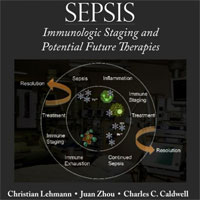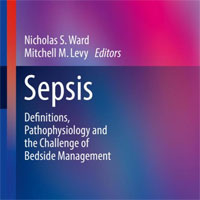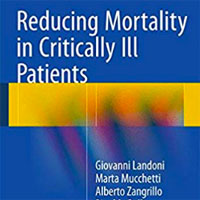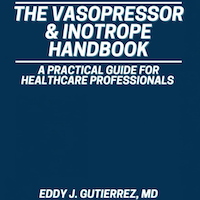Tag: hypoxia
Prophylactic IV Antibiotics Outcomes in Patients with Acute Severe Brain Injury on Mechanical Ventilation
Among critically ill patients with acute brain injury, prophylactic IV antibiotics were associated with less VAP but not with changes in length of stay, mortality, or neurologic outcomes. Patients with structural brain... read more
Lactate Trajectory Models for Predicting AKI and Mortality in Hyperlactatemia Patients
The present study underscores the significant prognostic value of lactate trajectories in critically ill patients, particularly those with hyperlactatemia. Our findings suggest that rapid lactate clearance is strongly... read more
Nebulized Long-Acting Bronchodilators to Treat ARF in an Older Patients
Although long-acting bronchodilators are not approved to treat acute respiratory failure (ARF), the older adult in this case clinically improved after three doses of revefenacin and arformoterol. Additional studies are... read more
ICU-AW in Cardiogenic Shock Patients Requiring Mechanical Circulatory Support
This study provides insights into the characteristics of intensive care unit-acquired weakness (ICU-AW) in patients with Cardiogenic Shock (CS) requiring mechanical circulatory support (MCS). ICU-AW frequently occurred... read more
Cellular Therapy with Mesenchymal Stromal Cells in Sepsis
Cellular therapy with mesenchymal stromal cells (MSCs) is a promising therapeutic modality in sepsis. Positive effects are mainly associated with frequent infusions and the dose of 1 × 106 cell/kg. Larger scale studies... read more
Optimizing Oxygenation For Tracheal Intubation in Critically Ill Patients
Tracheal intubation (TI) is a common procedure frequently performed in critically ill patients and is an integral part of emergency airway management (EAM). However, it carries inherent risks and can significantly impact... read more
Noninvasive Monitoring of Changes in Cerebral Hemodynamics During Prolonged Field Care for Hemorrhagic Shock and Hypoxia-Induced Injuries With Portable Diffuse Optical Sensors
There is a consistency in blood flow measures in both injury mechanisms (hemorrhagic shock and hypoxia), which is significant as the new prototype system provides similar measures and trends for each brain injury type, suggesting... read more
Fluid Accumulation Syndrome in Sepsis and Septic Shock
In this review, we aimed to comprehensively summarize current literature on pathophysiology, relevance, diagnosis and treatment of fluid accumulation in patients with sepsis/septic shock. Fluid accumulation syndrome (FAS)... read more
Elevation of D-dimer Levels Associated with Early Need for Mechanical Ventilation Support in COVID-19 Patients
Hypoxia and thrombosis are hallmarks of severe COVID-19, and each of them can exaggerate the other, adding to the magnitude of the disease. Our study proposes that D-dimer, commonly used as a marker of thrombosis, can also... read more
Improving Intubation Performance with Airway Registries
Airway registries are used as a crucial tool to monitor and improve intubation performance and patient care. ED airway registries inform and document the efficacy of quality improvement initiatives to improve intubation performance... read more
The effect of a multi-faceted quality improvement program on paramedic intubation success in the critical care transport environment
A multi-faceted advanced airway management (AAM) quality improvement program (QIP) resulted in statistically significant increase in intubation first pass success rates (FPS) rates and a non-significant improvement in DASH-1A... read more
Association Between Oxygen Desaturation Index and Cardiovascular Disease in Non-Sleepy SDB Subtype
In the Chinese community-dwelling population, non-sleepy sleep-disordered breathing (SDB) was highly prevalent. Oxygen desaturation index (ODI), an easily extracted indicator from a type IV sleep monitor, most strongly reflected... read more
CRT-targeted Fluid Resuscitation vs. Lactate-targeted in Septic Shock
Capillary refill time (CRT)-targeted fluid resuscitation in septic shock was not superior to a lactate-targeted one on early fluid administration or fluid balances. However, it was associated with comparable effects on regional... read more
MECA in Medical Emergency Situations Significantly Reduced Failure Rates
In our simulation, the use of medical emergency cognitive aid (MECA) in medical emergency situations significantly reduced failure rates. The use of MECA was widely accepted, and MECA were easy to use. In a high percentage,... read more
Closed-loop oxygen control improves oxygen therapy in AHRF patients under high flow nasal oxygen
Closed-loop oxygen control improves oxygen administration in patients with moderate-to-severe AHRF treated with HFNO, increasing the percentage of time in the optimal oxygenation range and decreasing the workload of healthcare... read more
Why Are We Still Talking about ICP and Ketamine?
A trauma patient required emergent intubation during a recent shift. The altered patient was suspected of having an intracranial bleed. My resident was concerned about rapid onset of hypoxia and other internal injuries causing... read more
Treating Hypoxia in Discharged COVID-19 Patients
The ICU technique of placing a hypoxic patient in a prone position is being widely used to care for COVID-19 patients in respiratory distress to improve oxygenation and possibly to avoid intubation. The COVID-19 pandemic... read more
Safety and Efficacy of MUST-ARDS
This important first study, using multipotent adult progenitor cells in ARDS patients (MUST-ARDS), was a phase 1/2 randomised, blinded, placebo-controlled trial that demonstrated safety and tolerability of intravenous administration... read more
Anti-interleukin Drugs Effect on COVID-19 Patients
Drugs targeting IL-1 or IL-6 did not shorten the time to clinical improvement in this sample of patients with COVID-19, hypoxic respiratory failure, low SOFA score, and low baseline mortality risk. Between April 4, and... read more
Incidence of Arrhythmia Higher in COVID-19 vs. Other CAPs
The incidence of arrhythmia was higher in COVID-19 than in other community-acquired pneumonia (CAP), with 2 out of 10 COVID-19 patients dying after developing arrhythmia. Higher incidence rates of conduction disorders... read more
Lactate = LactHATE
Like many others who attended SMACC earlier this year I returned home dazed and confused about the significance of lactate in the septic patient. So like any good (aspiring to be) evidence-based medicine practitioner,... read more
Rapid Sequence Induction: Where Did the Consensus Go?
The conduct of Rapid Sequence Induction (RSI) in current emergency practice is far removed from the original descriptions of the procedure. Despite this, the principles – rapid delivery of a definitive airway and avoiding... read more









